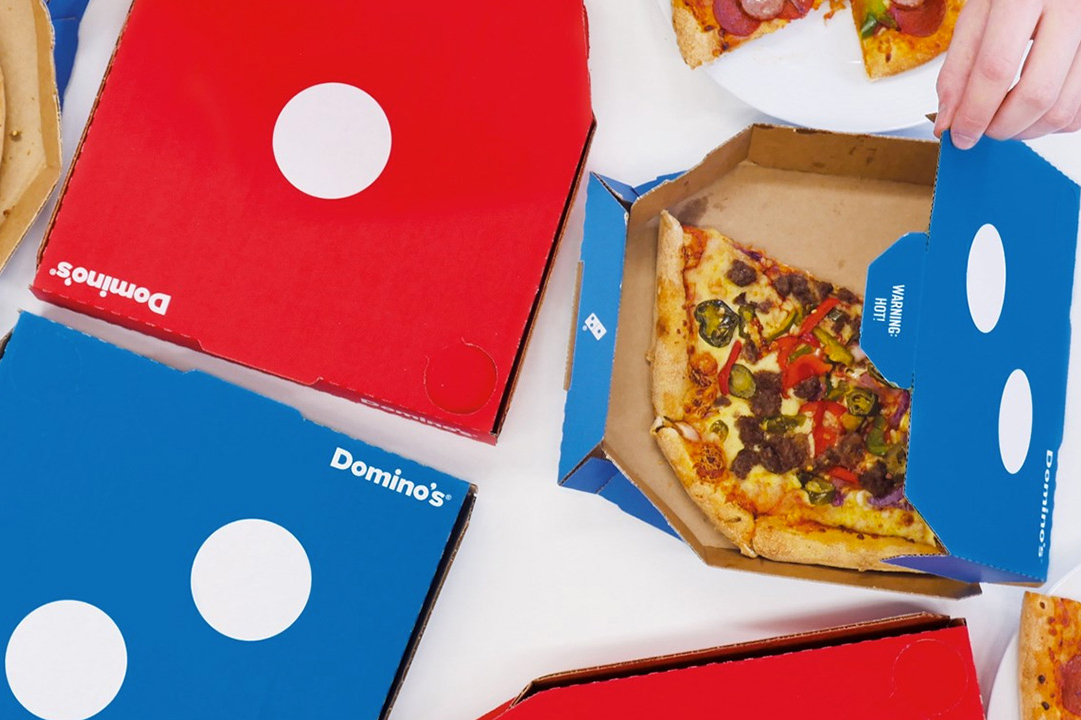In 2012, Domino's dropped "pizza" from its company name and unveiled a fresh, modernized logo. If you didn't know that happened, you're not alone. Now, more than three years later, Domino's is just starting to advertise the change. The company is having a positioning identity crisis. What gives?
To hear Domino's executives tell it, what started with new and remodeled locations designed to cater to the takeout crowd has become a brand that is "so much more than pizza."
Stop. Right. There.
When it comes to pizza positioning, Pizza Hut is innovative, Papa John's is better ingredients and Little Caesar's is low cost. Domino's is, and always has been, the leader in delivery. This has caused a positioning identity crisis.
Positioning theory would tell us that Domino's should emphasize carryout the same way FedEx treats 2-day delivery. They don't. Of course they offer it, why wouldn't they? But it's not part of their marketing because it's contrary to their position. In the same way FedEx can't own both the ideas "overnight" and "2-day delivery," Domino's can't own the ideas "delivery" and "carryout" in the minds of its customers
Don't believe me? Okay, how's this for a new FedEx tagline: "When it absolutely has to be there overnight or two days from now." Here's one for Domino's: "30 minutes or less ... definitely less if you pick it up yourself."
To further that line of thinking, you can probably guess how we feel about emphasizing wings, subs and pasta. Should they offer it as a supplement to the pizza menu? Sure, why not? People love wings with their pizza. But to become a brand that's "so much more than pizza" is to abandon your brand for a promotion. It results in a positioning identity crisis.
Everyone faces a positioning identity crisis from time to time, but two at once? Name change notwithstanding, Domino's will serve its long-term interests best by adhering to both motherly advice and positioning theory ... just be yourself.
Innis Maggiore Case Study

World's newest rust-buster does more with less
Companies who invest millions and millions of dollars in their stuff really hate to watch it rust away. They are consumed with fighting rust, but they are waging a war that is the longest and costliest in history.
Since the dawn of the Iron Age, people have sought ways to win the battle against rust. Advancements in paint yielded improved protection for steel in buildings, structures, bridges, vessels and vehicles. But insidious oxidation always is just a scratch, nick or ding away, ready to inflame into scaly, red scabs.
Then came Todd Hawkins, whose career put him in environments where steel was essential for performance, but also the potential for rust-infected catastrophic failure.
Hawkins had an idea based on carbon nanotechnology. He developed his idea and recruited some of the best scientific minds in nanotech. Hawkins' company, Tesla NanoCoatings, developed and brought to market Teslan®, the first carbon nanotube corrosion-protection coating system.
Teslan is new and faces the challenge of unseating incumbent coatings in industries where rust is a formidable foe. The company came to Innis Maggiore to develop and deliver Teslan's compelling advantages.
They are significant. Carbon nanotubes are the reason. They perform in a manner that creates diamond-hard durability. The product is formulated to maximize the cathodic responses that heal breaks in coated surfaces.
Teslan is a two-coat system, thus topping conventional three-coat systems because it takes less time and money to apply two coats. Teslan's durability makes it less prone to scratches that give corrosion a toehold. And its superior cathodic properties quickly deliver healing metals to spots that do suffer damage.
Teslan's simple proposition is that it does more with less. It delivers a big plus while subtracting work and money.
See how it is spelled out on their website.




